A Balanced Practice
Medical practitioners build patient care—and their own lives—on Humanics.
Jenny Despotovic, center, and medical staff at Texas Children's Cancer and Hematology Centers raise awareness for platelet disorders during Sport Purple for Platelets Day last September.
Jenny Despotovic, center, and medical staff at Texas Children's Cancer and Hematology Centers raise awareness for platelet disorders during Sport Purple for Platelets Day last September.

For Carlos ’93 and Javier ’96 Placer, it was paved with volleyball.
For Steve Steele ’82, it took a detour at Jacksonville University.
And, for Jenny McDade Despotovic ’97, G’99, the road to Springfield College began at Fenway Park.
The high school senior always knew she wanted to be a doctor. But, as no one in her family had been to college before, she didn’t know how to begin the process or if it was even possible for her. Then one day, she traveled to Boston to catch a Red Sox game and found herself surrounded by students and faculty sporting “Springfield College Athletic Training” jackets.

“I thought that was interesting, so then I started looking into Springfield, and I thought, this is perfect. This is exactly what I want to do,” says Despotovic. “It was obviously before the internet, and I went to a small high school in Maine where there weren’t people who knew how to help someone who wanted to go somewhere outside the University of Maine system. I didn’t really know how to look for colleges. I didn’t have guidance, so that’s how it happened. And, I pursued it.”
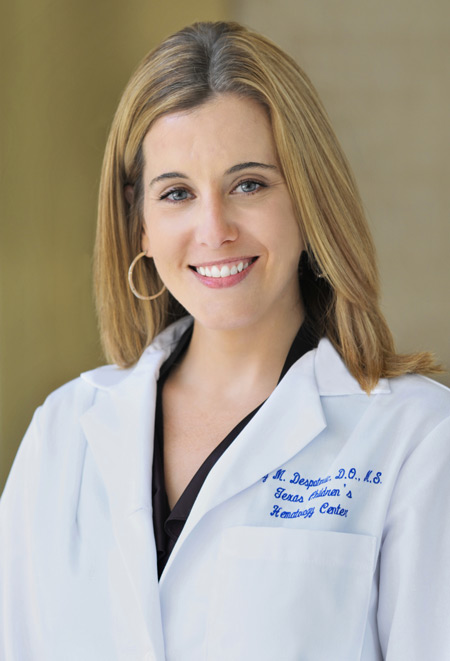
“Even though I ultimately changed majors in college to focus on medicine, it was the athletic training staff who gave me the confidence to do that even though they had invested a lot in me. They knew what my real passion was and they helped me make that move.”
Jenny Despotovic
When Despotovic found herself on Alden Street as a first-year student, she was eager to study athletic training under Charlie Redmond ’68, G’71. But, knowing her true passion was medicine, Redmond and the rest of the athletic training staff supported Despotovic as she transferred majors to sports biology in her sophomore year.
“Even though I ultimately changed majors in college to focus on medicine, it was the athletic training staff who gave me the confidence to do that even though they had invested a lot in me. They knew what my real passion was and they helped me make that move,” she says.
DESPOTOVIC WOULD EARN her sports biology degree and stayed to earn a master’s degree in science education, primarily so she could continue her involvement with the Partners Program, the still-active volunteer program where Springfield College students are paired with children from the community for mentoring.
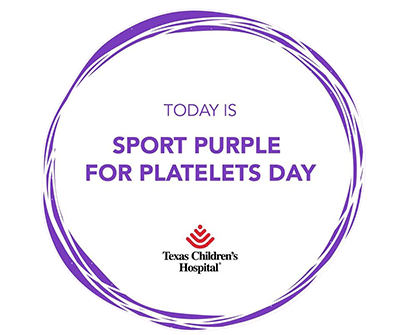
That love of children translated into a pediatric residency at the North Shore Long Island Jewish Health Center. And, much like how she jumped into a college career with little guidance, she embraced the most difficult parts of medicine head on.
“What intimidated me the most was cancer. So, I chose an elective that forced me to rotate through the hospital in cancer and blood diseases so I wouldn’t be quite as intimidated when I went in,” she explains. “Then I fell in love with it.”
A fellowship at St. Jude’s Children’s Research Hospital near Memphis, Tenn., led to an introduction to hematology, and Despotovic’s career was solidified. Today, she is the director of the Hematology Center at the Texas Children’s Hospital in Houston. She is an expert in blood disorders and cancers in children, particularly related to the immune system, and the founder of the hospital’s Immune Hematology Program, the first of its kind in the country.
AFTER TWO YEARS at Jacksonville University, Steele was ready to transfer to his first choice at Springfield College to study exercise physiology. He quickly found a home on the swim team, where he befriended Rick Parker, a teammate two years ahead of Steele, and fell under the mentorship of swim coach Charlie Smith. Between Parker, who would also go on to medical school, and Smith, Steele quickly questioned whether it was exercise physiology he wanted to focus on.
“My swim coach, he kind of knew me, and he would tell me that I would have to take orders from doctors if I was going to be an exercise physiologist. ‘You won’t be allowed to do anything without a doctor telling you what to do,’” Steele remembers with a laugh. “I think he knew I wouldn’t like that idea.”

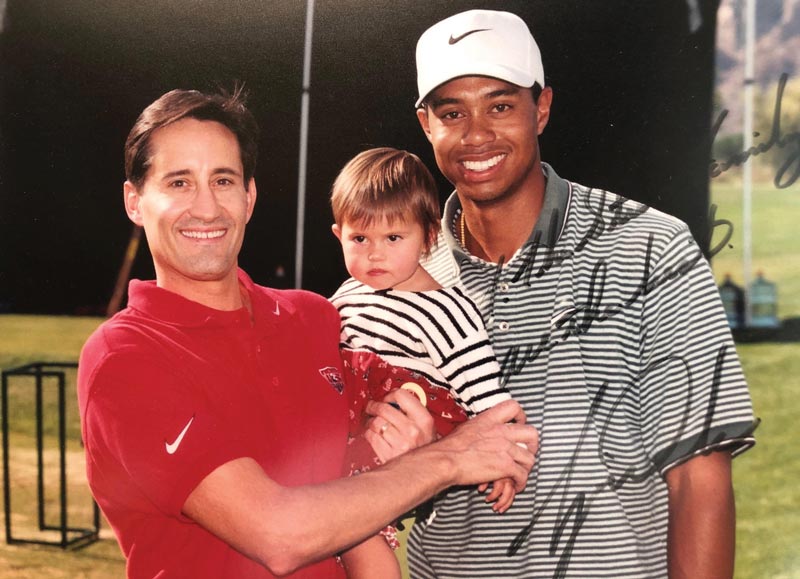
Steele has treated elite athletes like Tiger Woods, Venus and Serena Williams, Andre Agassi, Steffi Graf, Roger Federer, Rafael Nadal, and Novak Djokovic.
More interested in giving orders than taking them, Steele switched his focus to medicine, following in the footsteps of his grandfather, who had a family medicine practice. After graduating from Springfield College with a dual degree in health and fitness and biology, Steele joined a large number of teammates who went from the pool to medical school, specifically to the Kirksville College of Osteopathic Medicine (now part of the A.T. Still School of Medicine) in Kirksville, Mo. The osteopathic school of thought, that each system of the body is interrelated, “each working with the other to heal in times of illness,” according to the website of the American Osteopathic Association, seemed a natural progression for Springfield College alumni.
In short, osteopathic medicine is the Springfield College spirit, mind, and body ethos applied to the medical field.
“The philosophy of osteopathic medicine fits right in with body, mind, and spirit. It’s treating the whole patient,” says Steele. “It’s not saying, ‘Oh, the gallbladder patient over there in room 2.’ It’s Mrs. Smith with two kids who just had her gallbladder taken out. It’s about the person. It’s about what they like.
“The philosophy of osteopathic medicine fits right in with body, mind, and spirit. It’s treating the whole patient. It’s not saying, ‘Oh, the gallbladder patient over there in room 2.’ It’s Mrs. Smith with two kids who just had her gallbladder taken out. It’s about the person. It’s about what they like.”
Steve Steele
“Family medicine is much like this in a lot of ways,” he continues. “The philosophy of family medicine is that you don’t just take care of the disease, you take care of the patient, the person.”
Despotovic, who also studied osteopathic medicine at the New York College of Osteopathic Medicine in Long Island, agrees. “Really, for me, what I took the most from Springfield College was the spirit, mind, and body, the connectedness of all the different processes that make someone whole. I really went to osteopath school because of that foundation,” she says. “It still affects the way I think about patients and the way I approach their care. I think about their families and the dynamics and all the pieces that are affecting how they are dealing with their disease or illness.”
Steele has carried the osteopathic philosophy into his family medicine practice in La Quinta, Calif., but he has taken a circuitous route to get there. After stepping away from a Navy Reserve Officer Training Corps (ROTC) scholarship at Jacksonville to attend Springfield College, he reapplied for a Health Profession Scholarship Program (HPSP) scholarship through the Navy, a medical school equivalent of the ROTC scholarship that would help pay for his time in Kirksville.
Upon graduation, Steele served four years of active duty as a flight surgeon for the Marine Corps, a time he didn’t expect to enjoy as much as he did.
“It was great. I flew all over the world and met some of my lifetime friends. It was a tremendous time,” he says. “Even though the Navy wasn’t really part of my lifetime plan, it helped get me through.”
It was such a life-changing experience that Steele enlisted in the Naval Reserves, and in 2013, was deployed for six months to Kabul, Afghanistan, providing medical care for 2,000 troops.
He retired from the Navy in 2018, after 32 total years of service.
MUCH LIKE STEELE, Javier Placer’s path to a medical career was blazed by a family member. In his case, two.
Placer’s father, Carlos Enrique Placer, was a primary care physician in their native Puerto Rico, and Javier’s interest in the profession was piqued in middle school while hanging around his father’s office.
Then, when Javier was in high school, he saw his older brother Carlos leave Puerto Rico for Springfield College to play volleyball and study health science. So, when a recruiter from the same school arrived during his own senior year, Javier was ready to join Carlos.
Javier was driven to explore the pain management and rehabilitation field after suffering a back injury playing volleyball.
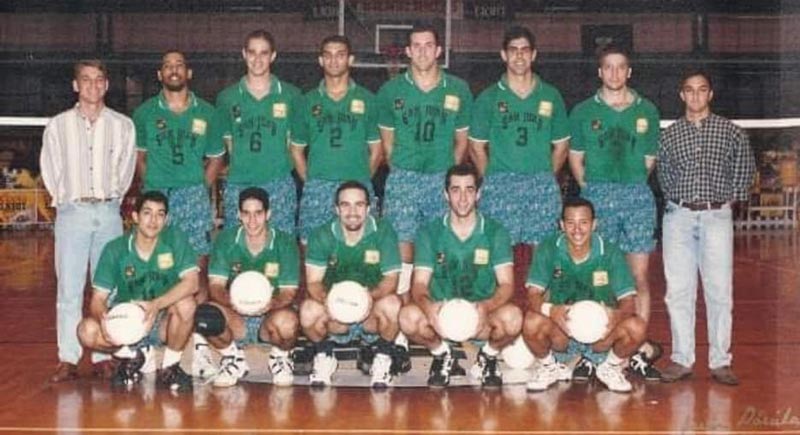
“We both knew early in life that we wanted to explore the pain management and rehabilitation (PM&R) field,” says Javier, who was driven to that specialty after suffering a back injury playing volleyball in high school. “He has been someone I have always looked up to and respect. It was easier for me to have someone with my same interests and one step ahead to guide me throughout the academic process.”
The transition for the Placer brothers (in addition to Carlos and Javier, Javier’s twin brother Manuel also attended Springfield College, although he did not play volleyball. He is now a medical consultant in Puerto Rico) was not an easy one. In addition to being more than 1,600 miles from home, they had to navigate a language barrier both on the court and in the classroom. Still, Javier persevered and eventually found an extended family in his teammates and coaches on the volleyball team.

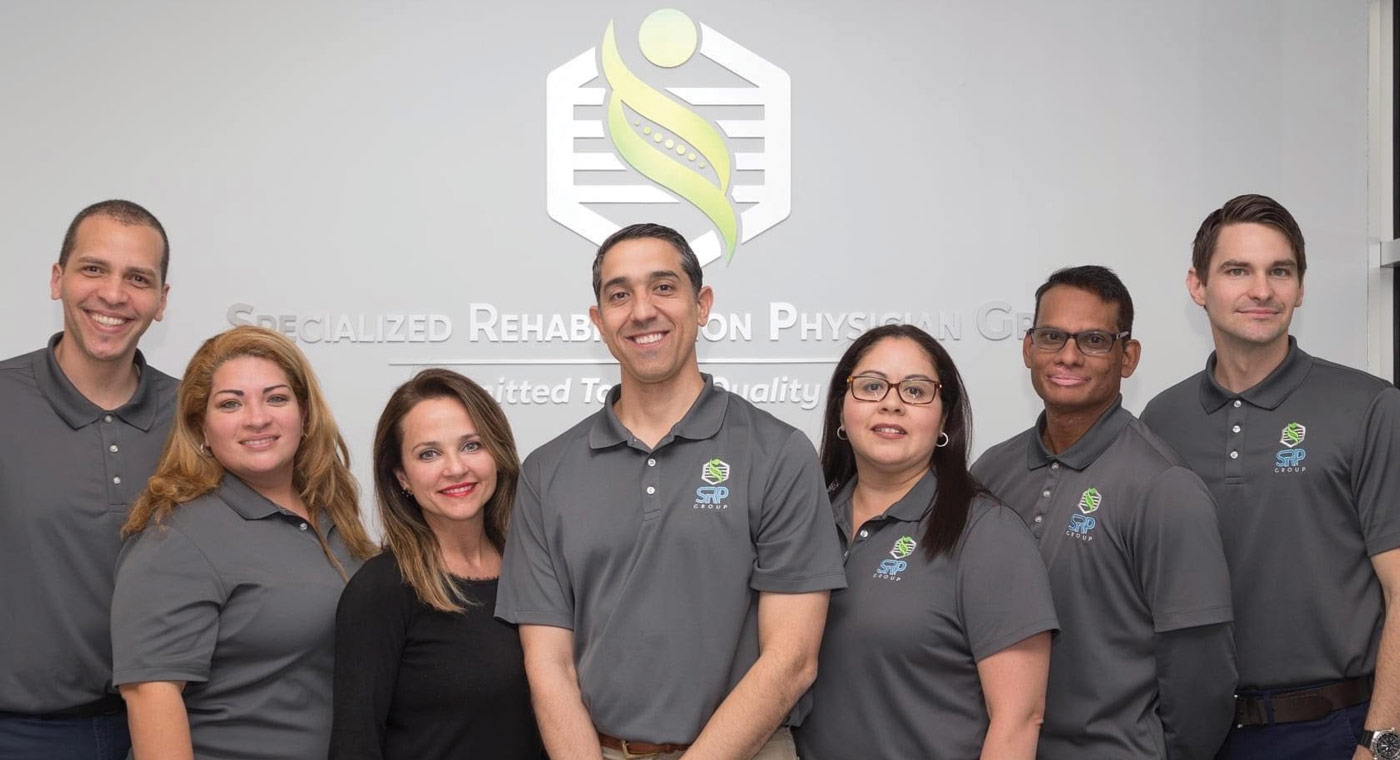
“The volleyball team was the key component in my success at school. Coach [Joel] Dearing ’79 was extremely patient, and my teammates were like family to me,” he says. “Coach Dearing might not be aware of this, but he was, and always will be, a great mentor to me. I learned a lot from him and embraced his charisma, patience, knowledge, and passion for volleyball. I apply his lessons in everything I do today in my career.”
After graduating from Springfield College in 1996, Placer returned home to attend medical school at the University of Puerto Rico. He then traveled to the University of Florida for a fellowship in pain medicine and spine and musculoskeletal care. He now practices at the Orlando-based Spine and Scoliosis Center.
Carlos still isn’t far away, working in the same specialty at the Regentics Health Institute in Kissimmee, Fla.
THE IMPORTANCE OF medical professionals is always evident. But in recent months, the COVID-19 coronavirus outbreak has underscored the vital role they play in society and the risks they can put themselves in. For Despotovic and Steele, especially, COVID-19 has created complications for themselves, their patients, and their practices.
In mid-March 2020, COVID-19 had yet to impact Texas the way it had other states on the east and west coasts. But for Despotovic’s patients, the situation was already getting serious.
“Right now, I don’t even think it’s in Texas and it’s still had a significant effect on our hospital,” she said at interview time. “The biggest problem will be a shortage of available blood and platelets because fewer people are donating and there’s an increased need. I think that’s the most pressing problem right now. But, I think the worst is yet to come, unfortunately.”
For Steele, located in southern California, the impact has come in two different areas. In his family medicine practice, the types of patients who make and keep appointments quickly changed.
“A lot of people are canceling their appointments and not coming to the doctors’ office because they think, ‘Well, my problem’s not bad enough and I don’t want to get exposed,’” he says. “Then there’s another group that might have a cough or the sniffles and they just want to get checked out and looked at. It’s a weird combination.”

But the biggest adjustment for Steele was its effect on “the fun part of my job.” For 25 years, he has served as a sports doctor at many of the professional golf and tennis events in the area. Over that time, he has treated elite athletes like Tiger Woods, Venus and Serena Williams, Andre Agassi, Steffi Graf, Roger Federer, Rafael Nadal, and Novak Djokovic. In January 2020, he worked at the American Express Classic, a PGA event in La Quinta. But when March rolled around and it came time for the BNT Paribas Open tennis tournament in Indian Wells, the athletes no sooner arrived before the event was canceled.
“I saw Nadal show up and said hi to him and talked to him a little bit. I saw Venus Williams and checked her out. And then they all turned around and left,” he recalls. “This would be a huge weekend economically for this town and fun for me, and then the whole thing got canceled to protect people.”
Steele also was scheduled to work at the Ana Inspiration LPGA tournament, normally held in late March and early April in Rancho Mirage, which also was canceled.
THE CAREERS AND PATHS of Despotovic, Steele, and the Placers vary greatly but each point to the Springfield College health sciences program as the place that laid the foundation for their future careers and specialties. Not the least of this is because of the faculty that taught and supported them over the years.
“I had so many impactful professors,” Despotovic says. “I was always inspired by Charlie Redmond, even when I switched majors. Mary Healey [’78, G’80] I bonded a lot with and she helped me. And, when I played briefly on the tennis team my first year I was at Springfield, Judy Van Raalte was a really big role model for me.”
Steele credits his connections on the swim team, particularly Smith, with pushing him to excel, along with many members of the then-Health and Fitness program.
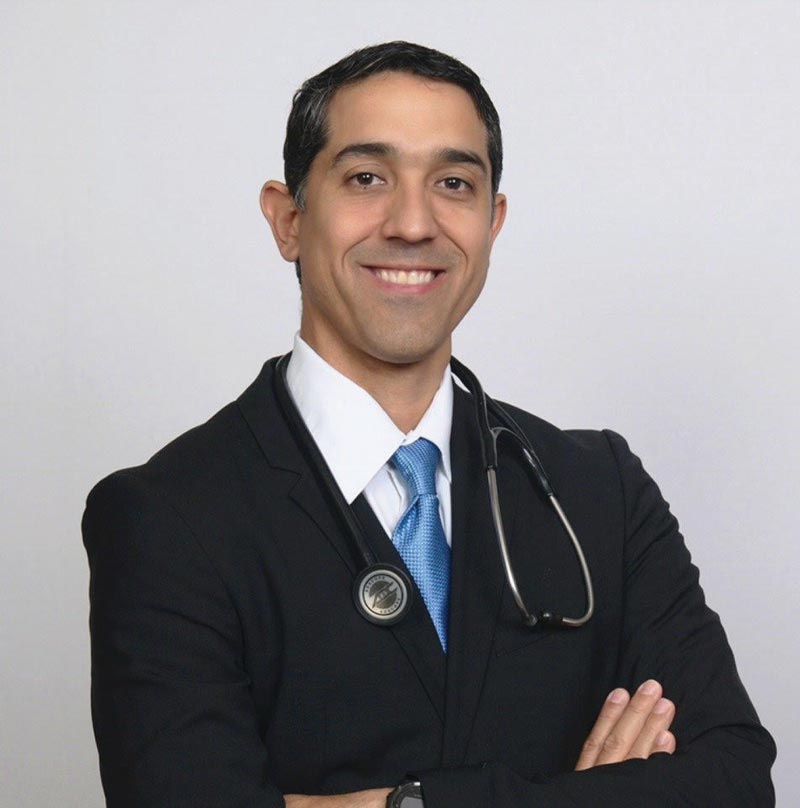
“The professors and students at Springfield College were amazing and extremely helpful. Springfield’s health sciences program provided me with the foundation and guidance needed to take my education to the next level.”
Javier Placer
Says Placer, “The professors and students at Springfield College were amazing and extremely helpful. Springfield’s health sciences program provided me with the foundation and guidance needed to take my education to the next level.”
Despite not having a specific pre-med program, the Springfield College mission, academic reputation, faculty expertise, and Premedical Scholars Program, which offers academic advising and guidance for students who intend to pursue advanced medical education, have given students an advantage as they prepare for medical school.
“Springfield College formed my work ethic and philosophy that all aspects of life have to be balanced in order to excel. The practice of medicine is all about the mind, body, and spirit philosophy,” Placer says. “To practice this profession successfully, you have to be actively engaged.
“I can truthfully say that my experience in college laid out the foundation on how I had to live a balanced life,” he continues. “I learned there is time for sports, study periods, and time to have fun and relax. I now know that there is time for work, family, and church. I cannot thank Springfield College enough for guiding me through my young formative years and helping me become the person I am today.”
Despotovic agrees. “It was one of the best decisions I made, to go to Springfield College. For sure.”![]()



